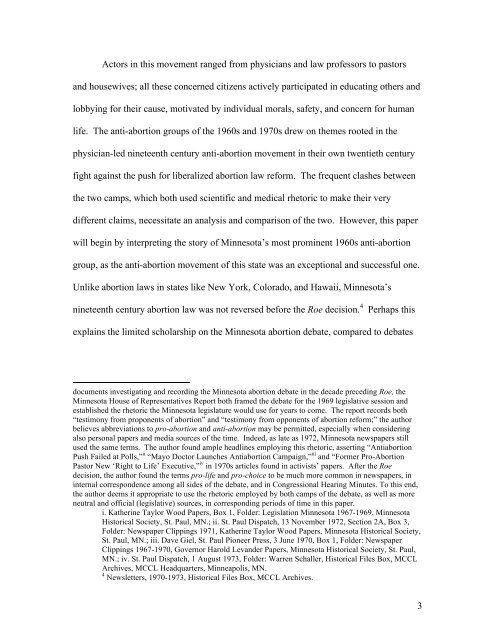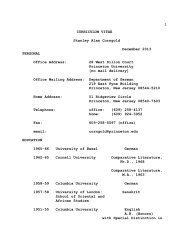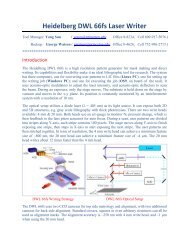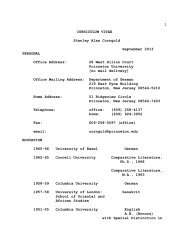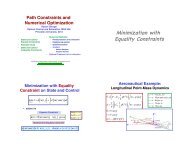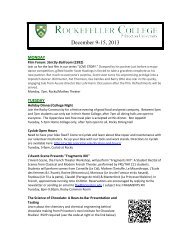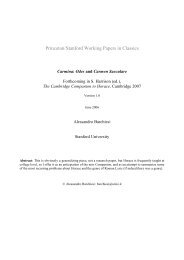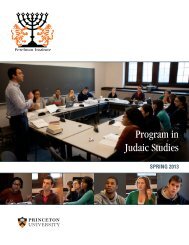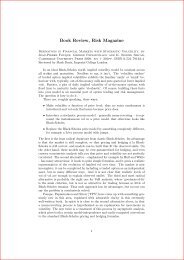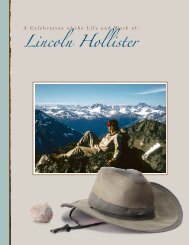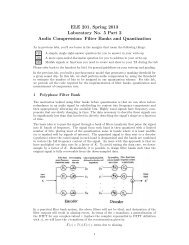The Pre-Roe Pro-Life Movement in Minnesota and New York
The Pre-Roe Pro-Life Movement in Minnesota and New York
The Pre-Roe Pro-Life Movement in Minnesota and New York
Create successful ePaper yourself
Turn your PDF publications into a flip-book with our unique Google optimized e-Paper software.
Actors <strong>in</strong> this movement ranged from physicians <strong>and</strong> law professors to pastors<br />
<strong>and</strong> housewives; all these concerned citizens actively participated <strong>in</strong> educat<strong>in</strong>g others <strong>and</strong><br />
lobby<strong>in</strong>g for their cause, motivated by <strong>in</strong>dividual morals, safety, <strong>and</strong> concern for human<br />
life. <strong>The</strong> anti-abortion groups of the 1960s <strong>and</strong> 1970s drew on themes rooted <strong>in</strong> the<br />
physician-led n<strong>in</strong>eteenth century anti-abortion movement <strong>in</strong> their own twentieth century<br />
fight aga<strong>in</strong>st the push for liberalized abortion law reform. <strong>The</strong> frequent clashes between<br />
the two camps, which both used scientific <strong>and</strong> medical rhetoric to make their very<br />
different claims, necessitate an analysis <strong>and</strong> comparison of the two. However, this paper<br />
will beg<strong>in</strong> by <strong>in</strong>terpret<strong>in</strong>g the story of M<strong>in</strong>nesota’s most prom<strong>in</strong>ent 1960s anti-abortion<br />
group, as the anti-abortion movement of this state was an exceptional <strong>and</strong> successful one.<br />
Unlike abortion laws <strong>in</strong> states like <strong>New</strong> <strong>York</strong>, Colorado, <strong>and</strong> Hawaii, M<strong>in</strong>nesota’s<br />
n<strong>in</strong>eteenth century abortion law was not reversed before the <strong>Roe</strong> decision. 4<br />
Perhaps this<br />
expla<strong>in</strong>s the limited scholarship on the M<strong>in</strong>nesota abortion debate, compared to debates<br />
documents <strong>in</strong>vestigat<strong>in</strong>g <strong>and</strong> record<strong>in</strong>g the M<strong>in</strong>nesota abortion debate <strong>in</strong> the decade preced<strong>in</strong>g <strong>Roe</strong>, the<br />
M<strong>in</strong>nesota House of Representatives Report both framed the debate for the 1969 legislative session <strong>and</strong><br />
established the rhetoric the M<strong>in</strong>nesota legislature would use for years to come. <strong>The</strong> report records both<br />
“testimony from proponents of abortion” <strong>and</strong> “testimony from opponents of abortion reform;” the author<br />
believes abbreviations to pro-abortion <strong>and</strong> anti-abortion may be permitted, especially when consider<strong>in</strong>g<br />
also personal papers <strong>and</strong> media sources of the time. Indeed, as late as 1972, M<strong>in</strong>nesota newspapers still<br />
used the same terms. <strong>The</strong> author found ample headl<strong>in</strong>es employ<strong>in</strong>g this rhetoric, assert<strong>in</strong>g “Antiabortion<br />
Push Failed at Polls,” ii “Mayo Doctor Launches Antiabortion Campaign,” iii <strong>and</strong> “Former <strong>Pro</strong>-Abortion<br />
Pastor <strong>New</strong> ‘Right to <strong>Life</strong>’ Executive,” iv <strong>in</strong> 1970s articles found <strong>in</strong> activists’ papers. After the <strong>Roe</strong><br />
decision, the author found the terms pro-life <strong>and</strong> pro-choice to be much more common <strong>in</strong> newspapers, <strong>in</strong><br />
<strong>in</strong>ternal correspondence among all sides of the debate, <strong>and</strong> <strong>in</strong> Congressional Hear<strong>in</strong>g M<strong>in</strong>utes. To this end,<br />
the author deems it appropriate to use the rhetoric employed by both camps of the debate, as well as more<br />
neutral <strong>and</strong> official (legislative) sources, <strong>in</strong> correspond<strong>in</strong>g periods of time <strong>in</strong> this paper.<br />
i. Kather<strong>in</strong>e Taylor Wood Papers, Box 1, Folder: Legislation M<strong>in</strong>nesota 1967-1969, M<strong>in</strong>nesota<br />
Historical Society, St. Paul, MN.; ii. St. Paul Dispatch, 13 November 1972, Section 2A, Box 3,<br />
Folder: <strong>New</strong>spaper Clipp<strong>in</strong>gs 1971, Kather<strong>in</strong>e Taylor Wood Papers, M<strong>in</strong>nesota Historical Society,<br />
St. Paul, MN.; iii. Dave Giel, St. Paul Pioneer <strong>Pre</strong>ss, 3 June 1970, Box 1, Folder: <strong>New</strong>spaper<br />
Clipp<strong>in</strong>gs 1967-1970, Governor Harold Lev<strong>and</strong>er Papers, M<strong>in</strong>nesota Historical Society, St. Paul,<br />
MN.; iv. St. Paul Dispatch, 1 August 1973, Folder: Warren Schaller, Historical Files Box, MCCL<br />
Archives, MCCL Headquarters, M<strong>in</strong>neapolis, MN.<br />
4 <strong>New</strong>sletters, 1970-1973, Historical Files Box, MCCL Archives.<br />
3


